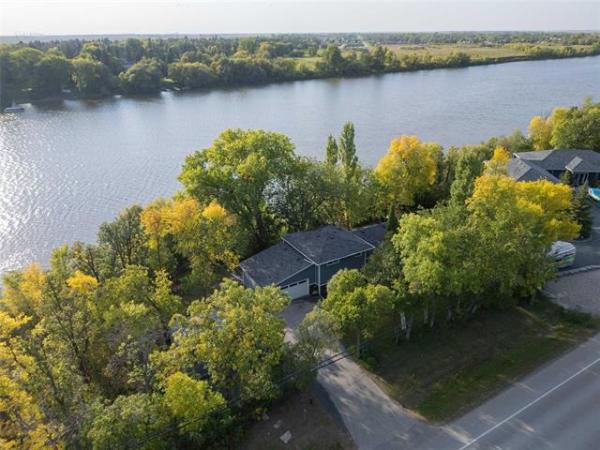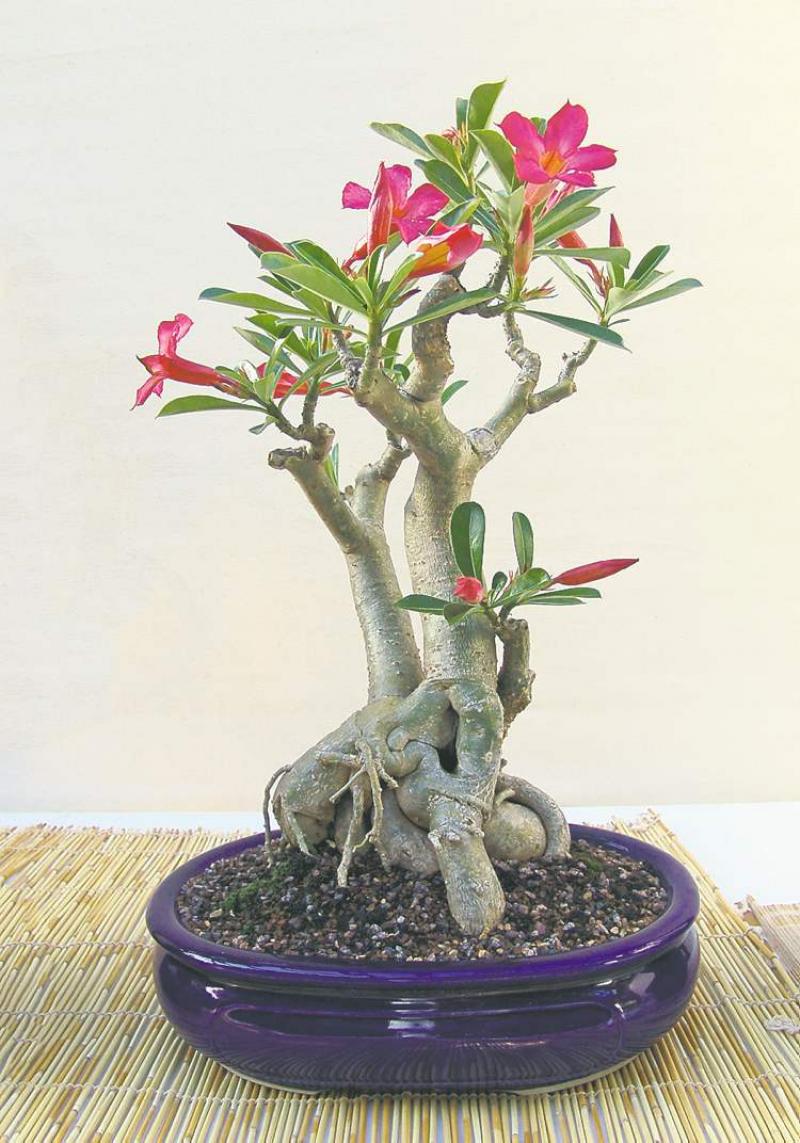
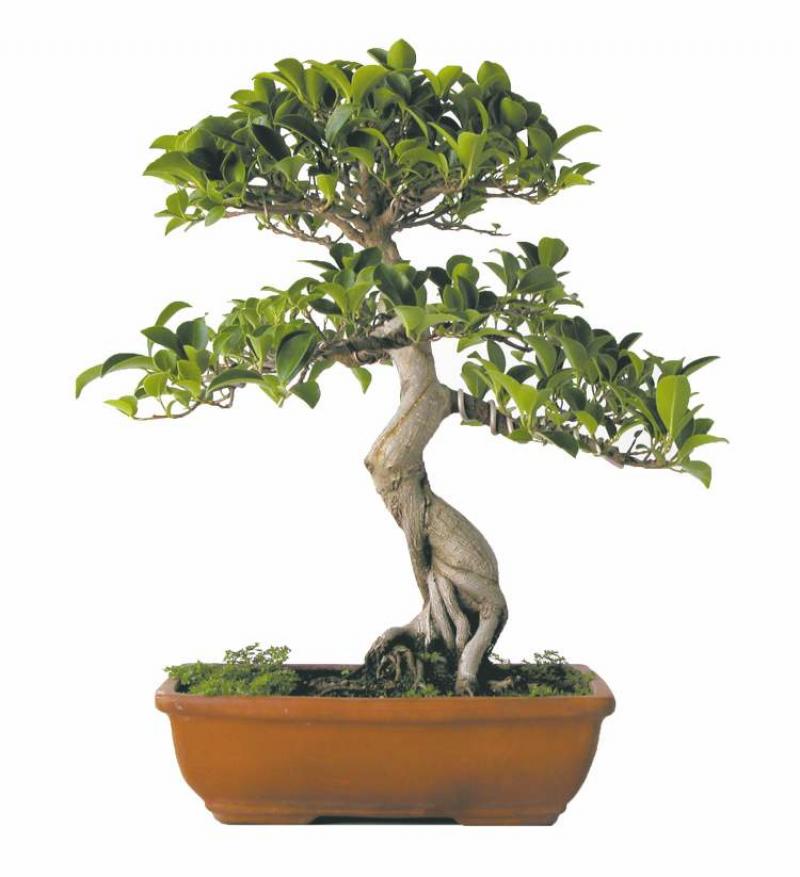
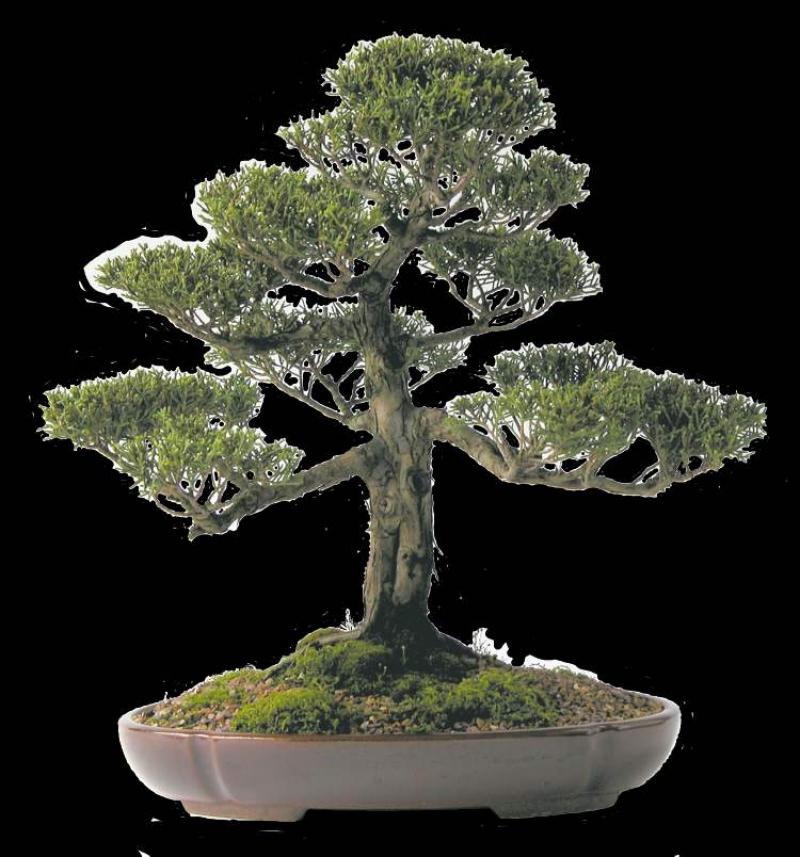
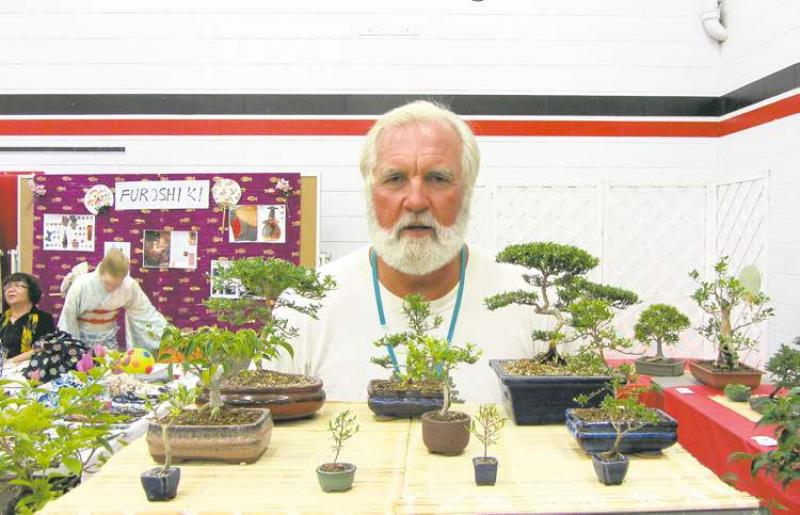
When Stu Innes, today's contributor, persisted in pruning the fruit trees in his backyard, his wife Debbie reacted with some alarm and suggested he find a hobby.
Innes recalls that as a young child he was intrigued by the dimensions of a plastic bonsai his parents kept on their coffee table. An invitation to attend a meeting of the Bonsai Society of Winnipeg resulted in a newfound passion.
To the uninitiated, bonsai may seem to represent merely tiny trees, but the techniques of this ancient discipline combine the love of gardening with an appreciation for art.
It's also an opportunity to work with unique plant material such as myrtle or the pomegranate tree.
No matter the size of your living space -- a rural property, small urban landscape or a condominium -- you can have whatever tree you desire through the practice of bonsai. It's a skill that lasts a lifetime.
The Winnipeg Bonsai Society will host its annual Bonsai Show today at the River Heights Lawn Bowling site from 11 am to 5 p.m. Trees of various species and styles will be on display, including tropical, native and more temperate types, ranging from thimble size to larger trees, miniature forests and mountain landscapes.
***
Interested in becoming a master gardener? Course sessions are offered by Assiniboine Community College in both Winnipeg (Sept. 22) and Brandon (Oct. 13). Visit the Manitoba Master Gardener website at www.mgmanitoba.com for a program overview or to register call 1.800.862.6307 ext 6742.
The Prairie Horticulture Certificate Program is offered by The University of Manitoba. Registration deadline is Sept. 17. For more information or to register call 1-888-216-7011 ext. 6037.
***
Todd Braun, a master stone-carver hosts the annual Elemental Stone's Beyond the Gate tour, this weekend, Saturday and Sunday Sept. 8 and 9. Join him for an hour-long excursion along tree-lined pathways featuring extraordinary stone sculptures. 8 a.m. to 8 p.m. Candles, torches, fires and lights in the evening. Located near Altona, north side of PR 201 between St. Joseph and Hwy. 30. Call 204-324-1534 for more details. Admission $10.
Colleen.Zacharias@gardensmanitoba.com
Bonsai, you say?
Begin by saying "bone"; now say "sigh". Put those together and you have bon-sai, or literally "tree in a tray." Bonsai, sometimes referred to as "those crooked little trees," is all about miniature, living representations of mature trees.
Styling trees in the ground, often in geometric shapes, is known as topiary. Bonsai, though, are always grown in a pot with feet (to allow air circulation and drainage), or on a "slab" of rock. If you want to annoy a bonsai artist, just call it "bawn-zai" and mention that you have a nice one growing in your yard. Bonsai are styled to represent real, mature trees or landscapes as found in nature. The goal of the bonsai artist is typically to create the vision of a grand old tree (or group of trees) that has survived the challenges of the elements and time and continues to thrive in its miniature form.
Bonsai are styled in many different forms, bringing to mind scenes from different parts of the globe. Each tree tells a story of not only where it might have grown, but also of what conditions it experienced. One might be a formal upright maple with broad reaching branches as you would find in a sheltered valley or on the Canadian Prairies. The next might resemble a more informal twisted, sparsely foliated juniper growing on a mountain side, with branches bent by wind and snow, some looking like driftwood ('jin' in bonsai terms). There are windswept styles as found on a windy coast or hillside as well as cascading styles with large branches reaching down a mountain side toward the warmth and moisture of a lake or stream below. More complex forms exist with roots growing over rocks, trees on tiny rock "mountains" or groups of trees (even forests of several dozen trees) on large slabs resembling a grove of trees on a knoll or small island.
For some reason it tends to surprise people that there are hundreds of species grown as bonsai. The best material will have naturally small foliage, made even smaller through frequent pruning and other techniques, and a woody bark. It will bud back forming new shoots easily when pruned, and ideally is suited to the local climate. Some traditional Japanese bonsai species are imported and can be grown successfully with extra care, but wonderful bonsai can be developed using more locally common material such as mugo pine, tamarack, amur maple, and various garden junipers. Trees such as these belong outside all year, as they require plenty of sun and air, cool temperatures, and they need the dormant winter period. They spend the winter in a sheltered area, out of direct sun, with their pots set into the ground with a mulch covering.
Tropical varieties such as many types of ficus (fig) can provide enjoyment in the home all winter, although they too should be outside all summer in dappled shade and will require very bright lighting indoors. The more experienced growers will attempt fussier varieties such as Fukien tea and Japanese maple, or flowering varieties including bougainvillea and azalea. Not only trees, but many shrubs and even ivy have been used. Landscapes and mountain scenes will also make use of tiny plant material such as small succulents and mosses, with the latter usually resembling grass.
Bonsai had its main beginnings centuries ago in China, and was passed on to Japan after invasions from that area. Many of today's styling principles come from the Japanese influence, although Chinese "penjing" landscapes are still popular. After the Second World War, interest in the hobby spread with those returning from Japan. It is interesting that something so peaceful, long lasting, and synonymous with great patience, was spread abroad as a result of the lack of these qualities in the human race. Perhaps we could learn from a 200-year-old pine growing on a mountain side; success isn't always about having everything we'd like -- it's more about making use of what we have.
Bonsai is a unique mixture of art and horticulture. The artistic piece is never done, changing with the season, maturing (hopefully) and might only be presentable for a short time each year. Some trees are even intended to be viewed in winter, with their branch structure being the main focus. A larch newly budding out in spring, a maple in fall colour, or an azalea in full bloom present striking views, but a display of healthy bonsai at any time of year can provide a great deal of pleasure, occasional pride, and a very healthy pastime to any owner.
The bonsai grower requires specialized training at the start, but it is not the great mystery you may think. Some appreciation of artistic and horticultural principles helps, but the skills are easily learned. A few minutes a day needs to be spent checking the trees and perhaps watering - it is not a weekend hobby. A certain amount of patience is required, both in developing any tree over a few years, and in accepting the occasional failure (often referred to as "kindling" by club members). The earlier one starts this hobby, the more outstanding their trees may become, but a pretty nice specimen can be created in a couple of years with care.
Information is available in books and on the internet, with the Bonsai Clubs International website www.bonsai-bci.com being an excellent starting point. These sources will cover styling and growing principles, such as pruning, wiring for shape, soil mixes and repotting. However, finding out what species to grow, how to keep it alive year-round, and where to get various supplies in Manitoba may be another matter. Senior members of the Bonsai Society of Winnipeg are happy to give advice, but just remember... it's "bone-sigh."


